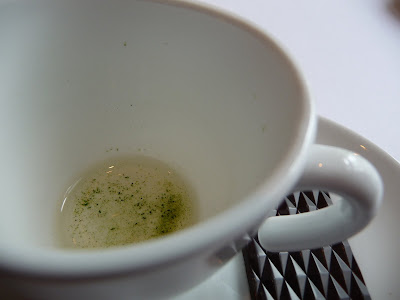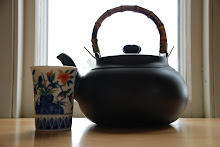 A recent cold has me thinking about comfort food. The kind that enwraps you in a blanket of fleece, providing warmth and maybe even nostalgia. For me, pillowy blueberry waffles fit the bill. They invoke images of my mom spooning batter, flecked with little plump berries, onto the griddle of the wafflemaker. The aroma of the waffles cooking would fill the house as my sister, brother, and I impatiently hovered over my mom's shoulders (much to her annoyance), our hunger increasing by leaps and bounds. The waffles, finally done, stacked neatly, one on top of the other, did not have a chance to make it to the dining room intact. Each of us grabbed one or two for ourselves and slapped them onto our plates, carrying our quarries to the table.
A recent cold has me thinking about comfort food. The kind that enwraps you in a blanket of fleece, providing warmth and maybe even nostalgia. For me, pillowy blueberry waffles fit the bill. They invoke images of my mom spooning batter, flecked with little plump berries, onto the griddle of the wafflemaker. The aroma of the waffles cooking would fill the house as my sister, brother, and I impatiently hovered over my mom's shoulders (much to her annoyance), our hunger increasing by leaps and bounds. The waffles, finally done, stacked neatly, one on top of the other, did not have a chance to make it to the dining room intact. Each of us grabbed one or two for ourselves and slapped them onto our plates, carrying our quarries to the table.My favorite way of eating waffles is with only small pats of butter. With the waffles still steamy, the quickly melting butter atop my waffles was barely perceptible, giving me full view of the luscious berries in their ridges. My sister and brother would look with pity at the bare contours of my chaste-looking waffles, as they poured maple syrup liberally over their own.
Nowadays, I have my blueberry waffles, still unadorned, but complemented by cup after cup of bracing sencha.

The vegetal astringency abates with the second infusion, yielding a more tame flavor but still with enough kick so that as I sipped the light green liquor gratefully, I almost forgot about my cold.






















